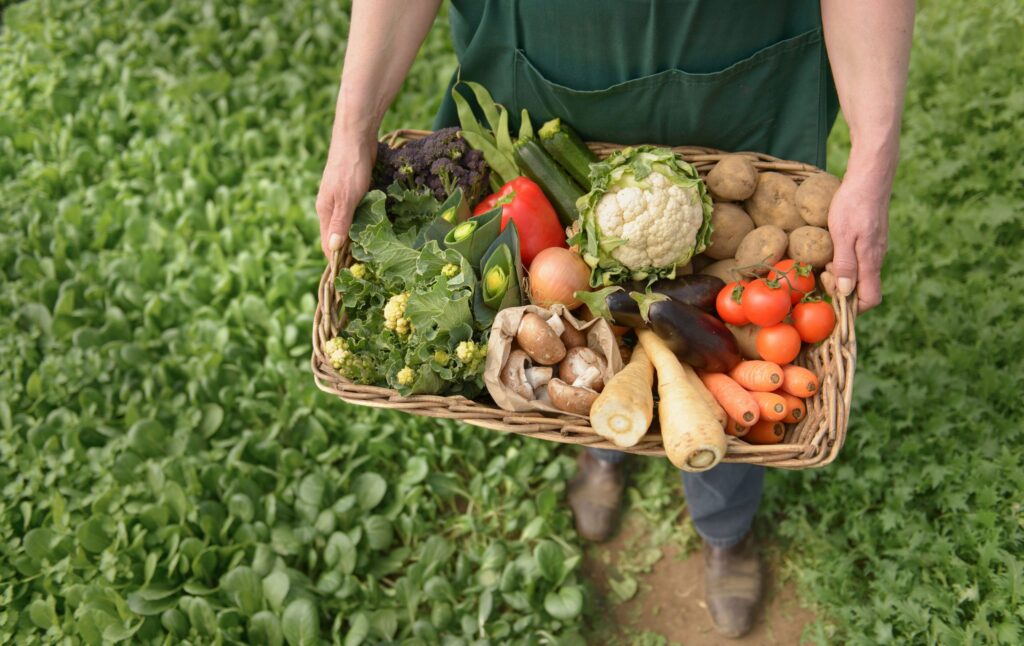Food & Climate
Organic foods markets have been growing since the 1990s because the paradigm shift in consumer eating habits as more people prefer sugar-free and fat-free products to maintain good health.
Moreover, this shift has not only been restricted to sugar and fat contents but has broadly extended to demand for organic, non-GMO, and locally sourced ingredients, underscoring a robust consumer inclination towards health-conscious and sustainable living.
Consequently, producers are now grappling with the intricate balance of adhering to stringent quality standards while ensuring scalability and cost-effectiveness of production.
The USDA says consumer demand for organically produced goods has shown strong growth, and while going organic may provide some health benefits, there’s also a big drawback, which is the cost, according many reports seen by “Food & Climate” platform.
In 2010, was estimated$ 26.9 billion is estimated to be spent in the US on organic foods. By 2021, sales reached$ 52 billion, according to the Nutrition Business Journal.
While “The Brainy Insights” company estimated that the $ 23.16 billion in 2023 global organic dairy foods and drinks market only would reach $ 64.58 billion in 2033, according to “The Brainy Insights”.
Organic milk, produced through organic farming practices, is the foundation for various organic dairy products such as milk, yogurt, cheese, butter, and ice cream. These products are known for their higher nutritional value compared to conventional dairy, containing up to 40% more heart-healthy conjugated linoleic acid (CLA) and 50% more omega-3 fatty acids.
Additionally, organic milk is rich in essential minerals and antioxidants like iron, vitamin E, selenium, and carotenoids. The increasing awareness of the health benefits associated with organic dairy products has led to a growing demand in the health and fitness sectors. These products are valued for their ability to support metabolism, boost immunity, alleviate muscle and joint discomfort, and reduce the risk of heart disease and cancer.
Organic foods
Dr. Sanjay Gupta, the host of the Chasing Life podcast, said, “If produce is grown in soil that has not been sprayed with certain substances like fertilizers and pesticides for at least three years before harvest, the USDA considers it organic”, according to “WPSD Local”.
Gupta said reducing one’s exposure to those chemicals is important, as he says high pesticide levels in foods have been linked to increased cancer risk, diabetes, and cardiovascular disease — a reason going organic continues to gain popularity.
Gupta said, while the organic label doesn’t guarantee you’re gonna be pesticide free, a consumer reports analysis did find most organic items were”.
New survey emphasized some Gupta’s fears about Organic foods. According to the results of the survey conducted for the Environmental Media Services by Lake, Sosin, Snell, Perry & Associates said, the results should dispel the notion that only a small section of the population is worried about organic standards.
“The organic foods market is one of the nation’s fastest-growing industries,” said Arlie Schardt, the firm’s executive director. “With the exploding demand for organic products, consumers are increasingly concerned about just what ‘organic’ means.”
The study surveyed 1,006 adults from various demographic groups. It was conducted during the widely publicized USDA comment period for its proposed new rule for a national standard to define “organic foods”, according to “supermarket news”.
According to the findings, one-third of all Americans buy organic items regularly, and 40 percent purchase organic foods at least a few times a year.
More than three-fourths (79%) said they favor labels that fully inform consumers about produce that has been grown using antibiotics, exposed to irradiation, genetic modification or grown with toxic sludge.
Eighty-five percent of the respondents said they want national organic standards, but oppose labeling as “organic” food that has been genetically modified, grown with toxic sludge, irradiated or treated with antibiotics. More than half, 64%, favored allowing organic producers to specify in their labels that they don’t engage in those practices.
High costs
The USDA says, on average, organic farms have higher production costs than conventional farms, but since prices are higher for organically produced foods, that allows farmers the opportunity to make up for the extra costs of organic farming.
However, this multi-billion-dollar business vertical, while showing a commendable growth pace, is also facing various obstacles, according to “Global market insight”.
One of them, that with rising awareness of eco-friendliness, excessive consumption and inappropriate disposal of plastic have come up as some of the major issues faced by F&B companies today.
So, F&B manufacturers and retailers are now focusing on supply chain management to tackle the present challenges through the adoption of numerous recycling practices and related investments.
But challenges for food manufacturing and distribution companies will increase as more countries or regional governments impose stricter norms to mitigate pollution.

Recently, the state of California, U.S., unveiled its country-leading regulations to curb single-use plastic usage, presenting bold targets for the F&B sector. Some of the targets under the new law would be:
Recycling of 65% of single-use plastic packaging and food containers by 2032.
Sale of single-use plastic packaging or food ware should be cut down by 25% by 2032.

